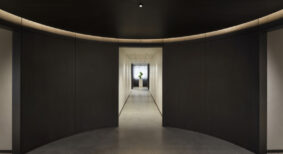Green leases have become an increasingly popular tool for commercial real estate properties. By some accounts, nearly fifty per cent of all commercial lease transactions today include green lease terms and conditions.
Landlords and building owners are using green leases as a differentiator to attract tenants. Specific lease terms can provide economic incentives. For example, energy cost savings are typically passed along to each tenant’s share of overall operating expenses. Additionally, tenants may recognize that green leases align with their values and corporate direction.
Until relatively recently, there was no consistent lease format that helped codify environmental performance and improved operating efficiency. In 2008, though, the Building Owners and Managers Association (BOMA) introduced its landmark guidelines for sustainable leasing practices – the BOMA Green Lease Guide – with wide-spread industry approval. Green leases that were uncommon and inconsistent now had a framework with nationally used language and contractual understanding.
In the U.S., many green leases rely upon the U.S. Green Building Council’s LEED (Leadership in Energy and Environmental Design) green building rating program as a tool to demonstrate sustainable practices, achieve efficient operating conditions and attract compatible tenants in a competitive market. LEED certification offers both landlords and tenants credibility through third party verification and ongoing facility improvements. The U.S. Department of Energy’s Energy Star ratings for buildings is another program that supports green leases by helping landlords demonstrate how their energy efficiency investments are benchmarked against baseline conditions for each market.
The rising use of green leases provides an opportunity for designers to take a proactive and engaged role in the exploration of design, workplace, operational and performance standards, which offer direct benefits to tenants and indirect returns to the landlord through tenant retention, asset performance improvements and potential attraction for future tenants. Also, architects have an opportunity to help existing building owners reposition their properties to meet green lease guidelines from BOMA, certify their properties through the LEED program and implement the Energy Star program to demonstrate best-in-class energy performance.
Designers can produce key design solutions that have a direct bearing on lease terms. Standard practice during the test fit planning phase for designers should include researching the base building design standards, developing a preliminary LEED scorecard for the new space and collecting Energy Star benchmark data for similar buildings.
Building owners continue to make sustainability improvements to their existing buildings as well as integrate green building elements into new spaces. Examples of these types of green building elements include electrical sub-meters for each tenant, green housekeeping protocols, construction waste standards, and indoor air quality and ventilation requirements. Architects need to be very familiar with these elements as they develop appropriate design solutions, while building their relationship as the trusted advisor for their client.
Designers have an instrumental role in addressing rebates and long-term energy-saving solutions. Rebates for LED lighting are typically offered only to the building owner. Yet, the initial cost of LED fixtures is generally attributed to the tenant as part of the tenant improvement allowance. Architects have a leadership responsibility to keep long-term energy savings and sustainable design principles at the forefront while the tenant and landlord resolve payment and rebate terms.
Since their formal introduction within the past five years, green leases have nearly become the standard legal agreement between tenants and landlords of commercial real estate properties. Designers have a significant role in providing design solutions that address terms and conditions of these green leases, which typically include energy performance, lighting standards, operating protocols and certification programs. Through essential design leadership, close coordination and effective communication, designers are well-positioned as an integral team member with tenants and landlords.
David A. Loehr is a principal and the public/corporate practice group leader at HGA Architects and Engineers. For the past 25 years, David has designed and led projects that are highly acclaimed for their sustainability performance and community response. He can be reached at 612.758.4516 or dloehr@hga.com.







